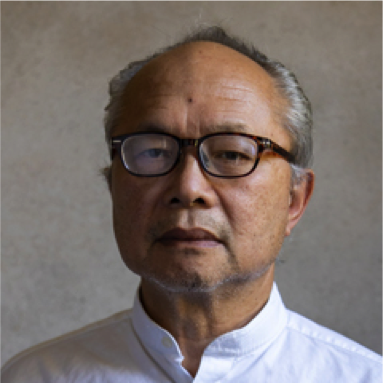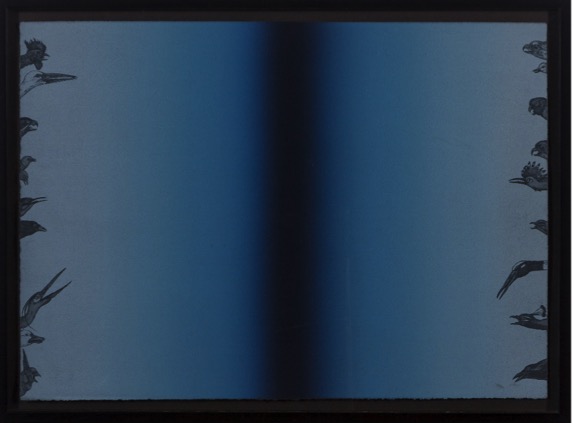Mel Chin

(b.1951) Mel Chin was born in Houston to Chinese parents, the first of his family born in the United States. He was reared in a predominantly African American and Latino neighborhood and grew up working in his family’s grocery store. Chin began making art at an early age. In 1975 he earned his BA in art from Peabody College in Nashville where his instructors recognized his interest in multiple means of expression and encouraged his creativity. He received an Honorary Doctorate from the School of the Art Institute of Chicago in 2020 for his significant contributions in art, design and scholarship. He currently lives in North Carolina.
Chin considers himself to be a conceptual artist with no allegiance to a single medium. In a 2019 video from the MacArthur Foundation, he says of his art, “Everything rises from an idea or concept, but I don’t leave it there. I adjust. If the concept needs to be a film, it will be a film. If it needs to be a sculpture, it will be a sculpture. If it needs to be a painting, it will be a painting. If it needs to be a piece of clay, it will be a piece of clay. It’s a very diverse way of operating in this realm of art.”
Chin’s subject matter varies greatly and defies categorization, although he is known for creating art that highlights political and social dilemmas. He is compelled by conditions where he feels he can contribute to transform a situation. When he initiates a project, his goal is for it to grow beyond his personal artistic contribution. For instance, in Revival Field (1991) he partnered with a USDA agronomist to create a “green remediation” garden in a toxic landfill in Minnesota to draw out heavy metals from the earth. For the Fundred Project (2006), he partnered with half a million teachers and students to give a voice to children threatened by lead poisoning. He had students across the country draw their own versions of hundred dollar bills that were then stacked and displayed in schools, museums and the halls of Congress. In Flint Fit (2018) he brought attention to the plight of contaminated water in Flint, Michigan. He paid people in Flint to collect the water bottles they used for drinking, washing and cooking. He sent the 90,000 bottles to a textile manufacturer in Greensboro, NC where they were shredded and made into fabric. Next, he enlisted the help of Michigan-born, NY-based fashion designer Tracy Reese to design a collection of rain gear and swimwear made from the fabric. The garments were sewn by workers in Flint and exhibited in a fashion show in NY.
Chin’s artwork may be found in the permanent collections of the El Paso Museum of Art, The Menil Collection in Houston, the Museum of Fine Arts, Houston, the Museum of Modern Art, New York, and Whitney Museum of American Art, New York.
Art on Campus
The Language of Birds
Year: 1996
Medium: Soft ground etching, aquatint, lithograph on black German Etching Paper
Location: Theatre Arts 2nd Floor
Gift of Rob Clark and Jerry Thacker
The Language of Birds is a subtle image with an unusual composition. The center of the print, typically the focal point of a work of art, features a dark black band running vertically down the center. Extending outward from the center in both directions is a blue wave gradually lightening in color from dark cobalt to a paler cornflower blue. The subject matter of the composition is visible only along the left and right edges of the print. Nine birds on the left and nine on the right, all different species, are projecting their heads into the space with beaks open as they call out across the void.
Chin was experimenting with the etching process when he created this print at Vinalhaven Press on the island of Vinalhaven, Maine. While there, he was likely inspired by the Sufi poem Conference of the Birds by 12th century Persian poet, Farid ud-din Attar. In the margins of a book translated by Akfham Darbandi and Dick Davis, Chin wrote the words, “Songs to the Shadows.” Chin’s striking use of a black central band could be interpreted as the visual representation of a shadow.
Conference of the Birds is the English translation of Manteq al-Tair (sometimes written as Mantiq-ut-Tayr). The poem tells the story of a gathering of birds of the world to determine who will be Simorgh or king. The hoopoe (spiritual guide) suggests they travel to a mythical mountain to find the Simorgh (also written as Simurgh in some translations). Each bird initially introduced in the poem represents a human flaw such as pride, cowardice, envy or greed. Most find a reason to back out of the journey along the way. Those that remain must cross seven dangerous valleys. In the end, only 30 birds complete the quest. They ultimately learn that they are the Simorgh, a literal Persian translation meaning 30 birds (si = 30 and morgh = birds).
Excerpt from lines 4232-54:
There in the Simorgh’s radiant face they saw
Themselves, the Simorgh of the world – with awe
They gazed, and dared at last to comprehend
They were the Simorgh and the journey’s end.
Excerpt from Lines 4272-90:
You cannot hope to see Him face to face;
You cannot hope for Life till you progress
Through some small shadow of this Nothingness.
First He will humble you in dust and mire,
And then bestow the glory you desire.
References:
The Conference of the Birds by Attar, translated by Afkham Darbandi and Dick Davis, Penguin Books, 1984, ISBN 9780140444346

